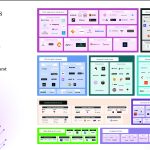
Customer Experience (CX) is constantly evolving, playing a pivotal role in business success. Research shows that 80% of companies have experienced revenue growth by prioritizing CX improvements.
The logic is clear — when customers are satisfied, they’re more likely to return, advocate for the brand, and drive long-term profitability.
Here are the key trends set to shape Customer Experience (CX) in 2025.
Trend 1: Omnichannel CX
In 2025, seamless interactions across multiple platforms will be essential. Customers expect to connect via mobile apps, social media, email, and voice — not just a website or phone number. Businesses must integrate these channels to provide a smooth, consistent experience.
Simply Contact has embraced an omnichannel approach, ensuring multiple touchpoints for customer engagement. Understanding customer behavior across channels also provides valuable insights for refining marketing strategies.
Nike excels in omnichannel CX, seamlessly linking its app and website to offer personalized workout plans and exclusive deals, enhancing the overall customer journey.
Trend 2: Strengthening customer data privacy
In an age where personalization drives customer engagement, data privacy is key to building trust. With 85% of adults seeking better online privacy and two-thirds of consumers believing tech companies have excessive control over their data, businesses must prioritize security.
Major breaches, like Microsoft’s 2023 leak of 38 terabytes and T-Mobile’s exposure of 37 million customer records, highlight growing risks. Additionally, phishing incidents are on the rise, with 20% of users encountering attacks.
To maintain trust, companies must implement encryption, conduct regular security audits, and train employees to detect threats, ensuring customer data remains protected.
Trend 3: Personalizing CX with data and AI
Businesses must leverage data and generative AI to deliver personalized experiences and stay competitive in the digital landscape.
Here’s why it matters:
- Rising expectations: Customers demand tailored interactions — failing to deliver can drive them to competitors.
- Competitive edge: Personalization fosters loyalty and boosts market share.
- Smart data use: AI-driven analytics enable highly targeted experiences.
- Higher engagement: Customized content enhances interaction and sales.
- Efficiency gains: AI automates marketing and customer service, optimizing resources.
By predicting behaviors and preferences, businesses can build stronger relationships and earn customer trust.
Trend 4: Smarter AI-powered chatbots
Chatbots are evolving in 2024, transforming from frustrating, repetitive tools into intelligent AI-driven assistants that enhance customer interactions. Unlike traditional bots, generative AI chatbots understand customer needs, offering real-time solutions and reducing frustration.
The chatbot market is booming — expected to grow from $12 billion in 2023 to $72 billion by 2028. WhatsApp chatbots, for example, can boost lead generation by 500% with a 28% conversion rate.
Businesses can leverage AI chatbots across websites, social media, messaging apps, and voice assistants like Alexa and Siri to enhance engagement and streamline customer support.
Trend 5: Sustainability drives customer loyalty
Sustainability is now a key factor in customer satisfaction, with younger generations favoring brands that reduce environmental impact. Businesses adopting eco-friendly practices, like using recycled materials and low-emission products, gain a competitive edge.
According to the 2023 Sustainability Trend Report, 46% of consumers expect brands to lead sustainable change, while 78% want companies to prioritize eco-friendly food production.
Additionally, Gen Z and Millennials are 27% more likely to support brands that prioritize environmental and social responsibility, making sustainability a crucial driver of customer loyalty and business growth.
Trend 6: Balancing self-service & human support
Today, customers prefer solving issues independently, making self-service essential. Businesses can leverage this by offering FAQs, how-to videos, and knowledge bases for quick solutions.
However, self-service alone isn’t always enough. A seamless transition to agent support is crucial for handling complex issues. Companies must ensure human assistance is readily available when needed.
Netflix is a great example, providing an intuitive help center with FAQs and troubleshooting guides while also offering live chat support for personalized assistance, striking the right balance between automation and human interaction.












